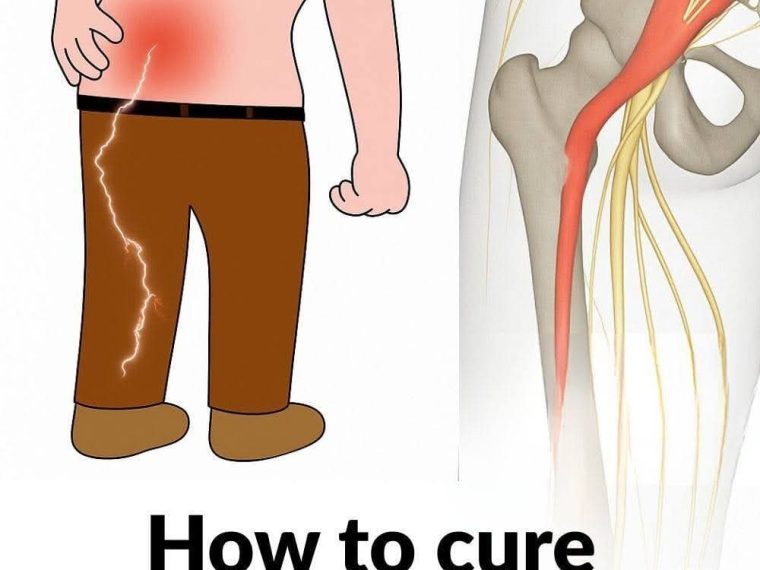3 Exercises to Relieve Sciatica Pain in the Leg: Practical and Effective
Sciatic nerve pain, or sciatica, is a common and often debilitating condition that affects millions worldwide. The sciatic nerve is the largest nerve in the human body, running from the lower spine through the buttocks and down the legs. When compressed or irritated—often due to a herniated disc, spinal stenosis, or muscle tightness—it causes sharp, burning, or radiating pain down one side of the body.
🔍 What Causes Sciatic Nerve Pain?
The most common causes include:
- Herniated disc (90% of cases): Compresses the nerve root.
- Spinal stenosis: Narrowing of the spinal canal.
- Piriformis syndrome: Tightening of the piriformis muscle that irritates the sciatic nerve.
- Degenerative disc disease or injury.
🧠 FACT: According to the Journal of Neurosurgery: Spine (2016), sciatica affects approximately 5% to 10% of individuals with low back pain and increases with age.
Natural Remedies to Soothe Sciatica
Before turning to surgery or medications, many people find relief with natural methods:
✅ 1. Hot and Cold Compresses
- Apply an ice pack for the first 48 hours to reduce inflammation.
- Follow with a heating pad to increase blood flow and relax the muscles.
✅ 2. Turmeric Supplements
- Curcumin in turmeric has anti-inflammatory effects.
- A study in Phytotherapy Research (2014) showed turmeric was as effective as ibuprofen for knee arthritis—suggesting its benefit for nerve inflammation.
✅ 3. Magnesium-Rich Diet
- Magnesium helps reduce nerve irritation.
- Foods: spinach, almonds, avocados, and bananas.
🧘♂️ 3 Exercises to Relieve Sciatic Nerve Pain
These exercises help stretch and mobilize the lower back, hips, and hamstrings, reducing pressure on the sciatic nerve.
1. Reclining Pigeon Pose (Piriformis Stretch)
How to do it:
- Lie on your back with knees bent.
- Cross the affected leg’s ankle over the opposite thigh.
- Pull the uncrossed leg gently toward your chest.
- Hold for 30 seconds and release.
Why it works:
This stretch opens up the piriformis muscle, which can compress the sciatic nerve if too tight.
🚶♂️ 2. Knee-to-Opposite-Shoulder Stretch
How to do it:
- Lie on your back with your legs extended.
- Bend your right leg and clasp your hands around the knee.
- Gently pull the knee across your body toward your left shoulder.
- Hold for 30 seconds, repeat 2–3 times.
Why it works:
This relieves pressure in the lower spine and stretches the gluteal and spinal muscles.
🧎♂️ 3. Cat-Cow Stretch
How to do it:
- Get on hands and knees.
- Inhale and arch your back (Cow pose), looking up.
- Exhale and round your spine toward the ceiling (Cat pose).
- Repeat 10–15 times slowly.
Why it works:
Promotes flexibility in the spine and reduces nerve compression caused by stiff vertebrae or discs.
🔍 Clinical trials in the journal Spine (2021) confirm that core-stability and mobility exercises significantly reduce sciatic pain and improve function over 6–12 weeks of consistent practice.
What to Avoid with Sciatica
- Sitting for long periods
- Heavy lifting or twisting movements
- Sleeping on a soft mattress without support
- Sudden high-impact sports
🛌 When to See a Doctor
You should consult a healthcare professional if:
- Pain lasts longer than 6 weeks
- You have numbness or weakness in the legs
- You experience loss of bladder or bowel control (medical emergency)
✅ Final Thoughts
While sciatic nerve pain can be intense, it’s often treatable with stretching, lifestyle changes, and natural remedies. Incorporating the 3 exercises above into your daily routine can dramatically reduce pain and promote healing. In combination with anti-inflammatory foods and rest, you can begin to regain mobility and improve quality of life—without relying solely on medication.





